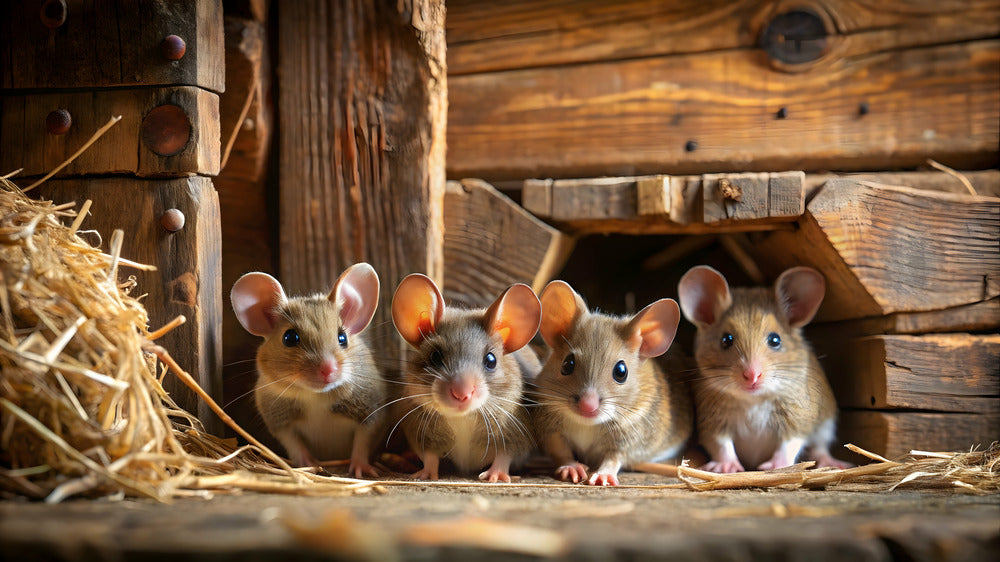
How Fast Do Mice Multiply in Your Garage?
Share
A single mouse might seem harmless, tucked away in a quiet corner of your garage — but don’t be fooled. In just a few months, a couple of mice can balloon into a full-blown infestation, putting your car, belongings, and even your health at risk.
And the damage they cause? It can get expensive, fast.
If you’re storing a car, RV, or camper — even for just a few weeks — you could be opening the door to a rodent problem if you’re not proactive.
Here’s what you need to know before things get out of hand:

How Often Do Mice Reproduce?
In short: a lot.
Mice living in safe, indoor environments can reproduce anywhere from 5 to 10 times per year. And when you consider that a female mouse reaches sexual maturity just six weeks after birth, those numbers can escalate quickly.
- Gestation Period: 19–21 days
- Time Between Litters: A female mouse can become pregnant again within 24 hours of giving birth.
- Litters Per Year: Up to 10 per female
This means a single female mouse can give birth roughly every 3–4 weeks — and before long, her offspring will start reproducing too.
How Many Mice in a Litter?
Litter sizes vary slightly by species, but the common house mouse typically gives birth to:
- Average Litter Size: 5 to 8 pups
- Maximum Reported: Up to 14 pups
To put that into perspective: at 10 litters per year with 8 pups per litter, one female mouse can produce 80 new mice in a year — and that doesn’t include the pups born to her daughters.

How Long Do Mice Live?
A mouse’s life may be short, but its impact is anything but.
- Average Lifespan: 1 to 2 years
- Reproductive Window: From 6 weeks old until death
That’s more than enough time for a single female to give rise to hundreds of descendants — especially in the protected, undisturbed corners of a garage.
How Fast Do Mice Multiply?
Given plenty of food, comfortable shelter, and no predators, two mice could theoretically create a population of nearly 5,000 mice in just one year through exponential breeding.


Of course, real-world factors like predation and natural mortality usually keep that number lower — but garages offer ideal conditions. That means a serious infestation isn’t just possible; it’s likely if you’re not paying attention.
Signs of a Mouse Infestation in Your Garage
For a full breakdown of tell-tale signs, check out our guide. But if you’re already suspicious, here are four red flags to look for:
- Mouse droppings: Small, dark pellets scattered near walls or hidden spaces
- Gnawed materials: Chewed cardboard, insulation, packaging, or car upholstery
- Strange smells: A strong ammonia-like odor from mouse urine
- Food stores: Piles of crumbs, seeds, or pet food tucked away in strange places

How to Prevent a Mouse Infestation with Box-Kat
The best way to deal with a mouse infestation? Stop it before it starts.
Box-Kat is a simple, highly effective, and easy-to-install physical barrier that prevents mice from ever getting near your vehicle.
- Blocks rodents from entering your car, RV, or camper
- Creates a protective perimeter using patented interlocking flex panels
- Withstands seasonal changes, making it perfect for long-term storage
- Avoids harmful traps or poisons, making it safe for kids, pets, and wildlife
Thousands of vehicle owners trust Box-Kat to keep their investments protected while in storage. Whether you’re safeguarding your daily driver, your weekend camper, or your prized classic, Box-Kat offers peace of mind that your garage isn’t turning into a breeding ground.
Check out our full selection of Box-Kat kits today!



